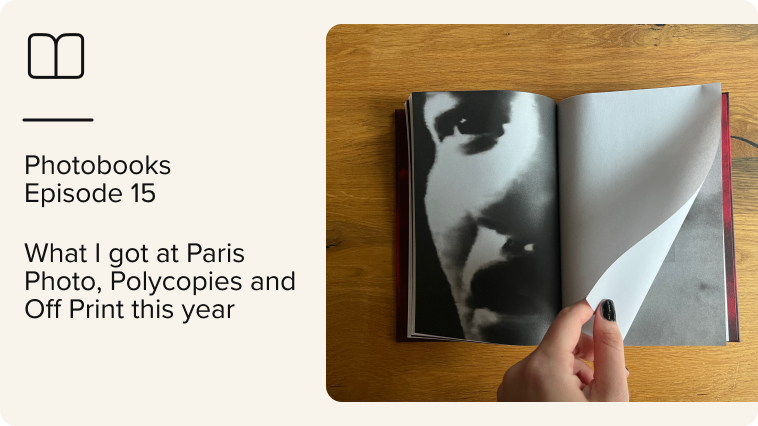
Your photography portfolio is more than just a collection of your best photo shoots. It represents your photography style and is often the deciding factor for potential clients to use your photography services. A strong, professional photography portfolio, therefore, doesn’t just showcase your talent but also tells a story about your photography expertise and the value clients can get from capturing their special moments in pictures.
In this photography guide, we’ll walk you through the steps to create a photography portfolio that not only highlights your best work but also helps you attract and win new clients. Whether you’re just starting out as a pro photographer or looking to refine your portfolio, these photography portfolio ideas and best practices will ensure you stand out in a competitive market.
A Quick Guide to Building Your Photography Portfolio
Showcase your best work: A photography portfolio should highlight your strongest images, emphasizing technical skill and creative photography style.
Maintain a cohesive photography portfolio design: Ensure consistent color, lighting, and composition to reflect your unique artistic vision.
Organize your photos strategically: Group images by theme, project, or niche to guide viewers and demonstrate versatility.
Tell a story: Use captions and descriptions to provide context, evoke emotion, and connect with potential clients.
Keep your photography portfolio updated: Regularly add new work, remove outdated images, and reflect your evolving skills and photography style.
A professional photography portfolio is your marketing tool, storytelling medium, and key to attracting clients.
What Is a Photography Portfolio and Why Is It Important?
A photography portfolio is a curated collection of your best photo work. It’s a representation of your photography skills, creative style, and the services you offer as a photographer. Think of it as your résumé and artistic statement all rolled into one.
For photographers looking to go professional, having a photography portfolio is essential. It gives potential clients an immediate sense of your artistic approach, the type of photography services you provide, and how you might collaborate together.
In many cases, your photography portfolio is the very first thing clients will see, and often what they’ll compare against other photographers. That’s why it’s crucial to make your portfolio both memorable and authentic, from the images you choose to the overall photography portfolio design and presentation.
Generally, there are two main types of photography portfolios: online and printed. Today, most photographers showcase their work online, since clients often discover them through search engines or social media. However, printed photography portfolios are still valuable in certain niches, such as fashion, fine art, or editorial work, where meeting clients in person remains common.
What Does A Good Photography Portfolio Look Like?
A good photography portfolio achieves a sweet spot between showcasing your technical skills and artistic vision.
Here are some key characteristics that make a portfolio stand out:
- Visually compelling: High-quality images are a must. Use a photo editor to ensure sharp focus, proper exposure, and well-balanced compositions. Every image should be visually engaging and draw the viewer in.
- Cohesive style: Your portfolio should present a unified aesthetic. This doesn’t mean every photo needs to be identical, but there should be a clear thread that connects your work, whether it’s a consistent use of color, lighting, or subject matter.
- Strong curation: Resist the urge to include everything you’ve ever shot. Select only your best work demonstrating your range within your chosen style. Quality trumps quantity every time.
- Well-organized: A well-organized and strong photography portfolio is easy for viewers to navigate. Use clear categories or themes to group your images and ensure a logical flow that guides the viewer through your work.
- Accessibility: Make sure your portfolio is accessible on a reliable platform that loads quickly and functions flawlessly across different devices.
- Storytelling: Effective captions and descriptions can enhance the impact of your work. Use them to provide context, evoke emotions, and connect with the viewer on a deeper level.
An effective portfolio should leave a lasting impression on the viewer and convince them you’re the perfect photographer for their needs. In a way, the portfolio is a marketing tool for your photography business and a conversation starter. You should ensure it reflects your professionalism and photography creative vision in the best possible light.
How to Build a Stunning Photography Portfolio in 8 Steps
Here’s a step-by-step guide to help you build a powerful photography portfolio that stands out from other photographers.
- Define your photographic style and niche
- Select your best shots
- Organize your photo work thematically
- Include a variety of photography subjects and techniques
- Get feedback
- Choose the right platform to publish your photography portfolio
- Create compelling narratives
- Update your photography portfolio regularly
Step 1: Define Your Photographic Style and Niche

Your photography portfolio should be a window into your creative vision. A clear, cohesive style will help you organize your work and set your business apart.
Here’s how to identify your photography niche and style:
- Review your photo work: look for recurring themes, compositions, and lighting techniques that resonate with you and draw the viewer’s eye. This is easy if you use an online photo gallery to share photos with your clients.
- Gather photography portfolio inspiration: browse portfolios of photographers you admire, noting elements you find particularly interesting. Don’t copy directly, but use them to refine your own photography portfolio design.
- Seek feedback: Ask trusted friends, colleagues, or mentors for their honest feedback on your work. This can provide valuable insights into your strengths and help you identify a style that resonates with others.
Step 2: Select Your Best Shots
Now that you’ve established your photographic style, it’s time to curate your best work. Remember, your photography portfolio is a curated collection, not a comprehensive archive, so resist the urge to include everything you’ve ever shot.
Here are some key criteria to consider when selecting the photos and images to include in your portfolio:
- Technical excellence: this is the foundation. Ensure your chosen images are sharp, well-exposed, and free from technical flaws. Viewers should be impressed by your mastery of the camera and technical aspects of photography.
- Emotional impact: beyond technical proficiency, your photos should evoke a feeling or tell a story. Does the image capture a sense of joy, mystery, drama, or serenity? Choose images that resonate with the viewer on an emotional level.
- Style consistency: while a touch of variety is good, your portfolio should primarily feature images that exemplify your defined style. This creates a cohesive presentation and reinforces your unique artistic vision.
Step 3: Organize Your Photo Work Thematically

With your best work selected, it’s time to organize your photography portfolio to maximize its impact. While chronological order might seem like the most straightforward approach, consider thematic organization.
Themes can act as narratives, guiding the viewer through a specific experience. Thematic organization allows you to curate specific collections relevant to different clients or projects. For instance, if you’re approaching a potential wedding client, you can showcase a thematic gallery dedicated to your wedding photography.
Don’t be afraid to use multiple themes within your portfolio. This allows you to demonstrate your ability to adapt your style to different subjects and situations, showcasing your expertise as a professional photographer.
Step 4: Include a Variety of Photo Subjects and Photography Techniques
Thematic organization in your portfolio allows you to highlight different aspects of your style and expertise. However, within each theme, showcasing a variety of subjects and techniques can further demonstrate your versatility as a photographer.
Here’s how to strike the right balance without compromising your overall aesthetic:
- Balance subjects: don’t limit yourself to a single subject matter within a theme. For example, a “Landscape” theme could showcase breathtaking vistas, intimate forest scenes, and captivating cityscapes at night.
- Highlight techniques: use different lighting setups, compositions, and post-processing techniques within a theme. This demonstrates your ability to adapt your approach to achieve different creative results. However, ensure the techniques complement your overall style and don’t create a jarring contrast.
Step 5: Get Feedback from Fellow Photographers

Your photography portfolio is a powerful marketing tool, and you want to ensure it makes the strongest possible impression. Seeking constructive criticism from trusted individuals can help you identify areas for improvement and refine your final presentation. Ask:
- Peers and colleagues: fellow photographers can offer valuable technical feedback on aspects like composition, lighting, and editing.
- Potential clients or collaborators: reach out to potential clients or collaborators whose businesses align with your photographic style. Their feedback can be particularly insightful, as it highlights whether your portfolio effectively targets your desired audience.
- Mentors or photography instructors: experienced professionals can offer guidance on composition, storytelling, and overall portfolio presentation. They may also have insights into current industry trends and client expectations.
Once you’ve received feedback, take some time to analyze it objectively. Consider recurring themes and suggestions from different reviewers. Don’t be afraid to make changes but don’t stray too far from your own artistic vision. Feedback can be a catalyst for improvement, so if the majority of reviewers suggest removing a specific image, consider their perspective and be willing to adjust your selection.
After incorporating feedback, test your portfolio with a new audience. This can reveal if the changes have improved its effectiveness.
6. Choose the Right Platform for Your Photography Portfolio
Selecting the ideal platform to showcase your photography is crucial in shaping potential clients’ perceptions of your work. Personal websites, social media platforms, and specialized online portfolio sites are some of the popular choices available, each with its own set of pros and cons.
- Pros: Offers ownership of photos and complete creative control over design and layout.
- Cons: Creating a website requires technical knowledge for setup and maintenance. Additionally, you must work on getting visitors to your site through marketing and SEO efforts.
Social media for photography portfolio
- Pros: Great for quick exposure and building an audience. Easy to share and update.
- Cons: Limited space for detailed presentations and controlling image quality. Algorithms may limit reach.
Personal website for photography portfolio
- Pros: A photo portfolio site offers a user-friendly interface, security features, and client collaboration tools. It can also be optimized for mobile viewing.
- Cons: Customization may be limited compared to personal websites. Subscription fees may apply.
Also, consider creating a physical photography portfolio you can hand out to prospective clients at in-person events.
Step 7: Create Compelling Photo Narratives

Great photographs don’t exist in a vacuum. They capture moments, evoke emotions, and tell stories. Weaving narratives into your portfolio presentation can significantly enhance its impact.
Keep the captions brief and ensure they provide context. Use active verbs to create a sense of movement and engagement. Focus on emotions to set a mood and connect with the viewer on a deeper level.
For specific projects or campaigns, consider presenting your work in a sequence that tells a story. Highlight the challenges, solutions, and final outcomes to showcase your creative process and problem-solving skills.
Step 8: Update Your Photography Portfolio Regularly
Your photography portfolio is a living document that should evolve as your skills and artistic vision grow. Periodically review it, add new and recent work, and remove any images that no longer align with your current style or technical capabilities. This regular update demonstrates your ongoing development and keeps your portfolio fresh and relevant.
While staying true to your style, consider incorporating subtle nods to current trends in photography. This shows you’re adaptable and aware of the industry landscape.
Aim to update your portfolio at least once every few months. If you’ve completed a significant project or honed a new technique, consider adding that work sooner.
Create a Professional Photography Portfolio with picdrop
picdrop is a modern photo gallery platform built for professional photographers, combining the elegance of traditional portfolio presentations with the efficiency of digital tools. It makes managing your photography portfolio and client galleries simple, seamless, and professional. efficiency.
Key features of picdrop’s online photo gallery include:
- High-quality, customizable client photo galleries: unlike basic portfolio sites, picdrop allows you to create stunning, adaptable galleries. Tailor your presentation with high-resolution images that make every detail pop.
- Project-specific photo galleries: quickly curate galleries tailored to specific client inquiries. If a client needs maternity shots, you can showcase your best work in that category with just a few clicks, ensuring your presentation is relevant and compelling.
- Streamlined client collaboration: share your galleries directly with clients, who can then leave feedback, select favorites, and download images right from the platform. This seamless interaction saves time and enhances the client experience, fostering better communication and collaboration.
- Secure and dependable: with picdrop, you never have to worry about the security or reliability of your online presentations. Our platform ensures that your work is always showcased in the best light, with robust hosting and impeccable performance.
With picdrop, your photography portfolio becomes a professional tool that elevates your work, strengthens client relationships, and helps you attract new opportunities.
Ready to elevate your photography business? Create a professional portfolio on picdrop for free, or explore our paid offerings to enjoy more features.
FAQs of Photography Portfolio Ideas and Best Practices
Got more questions about building your portfolio as a professional photographer? We’ve answered them below.
Do Professional Photographers Need a Portfolio?
Absolutely! A portfolio is a professional photographer’s essential marketing tool. It showcases your skills, style, and experience to potential clients and collaborators.
What Should Be Included in a Photography Portfolio?
Only your very best work! Focus on quality over quantity. Curate a selection of images that exemplify your style, technical expertise, and the variety within your skillset. Organize your work thematically for a cohesive presentation.
What Should Not Be Included in a Portfolio?
Avoid including blurry, poorly exposed, or unedited images. Similarly, don’t overload your portfolio with mediocre work. Strive for a curated selection that highlights your strengths.
What Size is a Portfolio Layout?
The size of an online portfolio is flexible depending on the platform you choose. However, ensure your images are high-resolution for an optimal viewing experience. Standard presentation sizes like A4 or A3 are commonly used for physical portfolios.
Should a Portfolio Be Landscape or Portrait?
This depends on the content of your work. If you primarily shoot landscapes, a landscape layout might be more suitable. For portraiture or a mix of subjects, a portrait layout might work better. Ultimately, choose the layout that best showcases your images.
How Many Photos Do I Need for a Photography Portfolio?
There’s no magic number, but quality trumps quantity. Avoid adding too many images and aim for a concise selection of 10-20 strong images that effectively represent your style and skillset.
How Should I Organize My Photography Portfolio?
Thematic organization is a powerful approach. Group images based on genre, mood, project, or color palette. This allows for a cohesive narrative and targeted presentations for specific clients.
What is the Best Online Portfolio Platform for Photographers?
picdrop is the best online portfolio platform for professional photographers. Beyond letting you display your work in a visually appealing way, it also makes it easy to deliver photos to clients and collect feedback from them. See how picdrop works.



